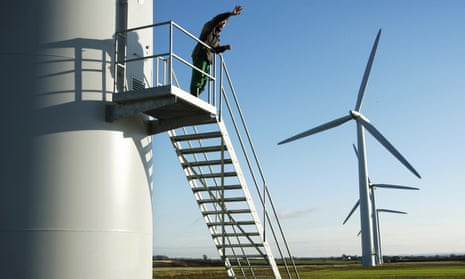Onshore wind and large solar farms are likely to be competitive on cost with gas-fired power generation by the end of this decade, according to the government’s climate change advisers, but only if gas pays its fair share through a carbon price.
In order to meet these expectations, investors must gear up in the next few years to put new money into all low-carbon sectors, and government must give them the policy signals they need in order to do so, said Matthew Bell, chief executive of the Committee on Climate Change.
Lord Deben, chair of the committee, added: “The 2020s are crucial in setting the direction for UK power generation, and to ensure the UK can meet its 2050 climate change commitments cost-effectively. The key tools are already in place to deliver the investment in low-carbon generation that is required.
“The government must now urgently clarify the direction of future policy to ensure the power sector can decarbonise at lowest cost to businesses and households.”
While onshore wind and ground-mounted solar projects are regarded as mature technologies, these industries have been shaken up by major changes to the support regimes in place for them, by changes to the planning environment, and by negative comments from ministers. Several solar power companies have recently gone bust or fear financial trouble, with job losses already topping 1,000.
Nick Molho, executive director of the Aldersgate Group, which represents business and campaigns for a greener economy, said the UK’s low-carbon policies had led to the growth of a green sector now worth £122bn and employing 460,000 people.
But, he added, many key support policies, on issues such as low-carbon heating and low emission vehicles, were due to expire within this parliament. “The low carbon sector is now at a crossroads, with urgent clarity needed on the funds available to support investment in low-carbon power stations in the 2020s and the support mechanisms that will help improve the efficiency of the UK’s building stock.”
Simon Bullock, senior energy campaigner at Friends of the Earth, said: “The government’s own advisers say it will be cheaper to use low-carbon electricity rather than gas to power our economy in the 2020s. Ministers should be championing the UK renewable sector, instead of strangling the life out of solar and onshore wind, threatening tens of thousands of jobs and pushing up bills in the future.”
Offshore wind and other low-carbon technologies such as carbon capture and storage will still need significant support in the early 2020s, the Committee on Climate Change said, in an advisory report that precedes its statutory report to come on 26 November.
That report will carry the full weight of the committee’s authority, which under the Climate Change Act is to propose carbon budgets more than ten years into the future, and assess whether governments are meeting them through their policies.
Thursday’s report predicted that the full cost of new gas-fired generation would reach £85 per MWh for new plants coming online in 2020, and £95MWh for 2025, including the likely cost of carbon. This compares with onshore wind and ground-mounted solar projects that are under contract to deliver electricity at £83MWh from 2016-17. However, these prices rise by about £10 per MWh if the intermittency of the renewables is taken into account.
Household energy bills will continue to rise, the committee predicted, beyond 2020. The impact of low-carbon investment on bills is likely to increase from about £105 a year in 2020 to about £120 a year by 2030.
Luke Warren, chief executive of the Carbon Capture and Storage Association, called on the government to fulfil its promise of two pioneering CCS projects. “As the date for the comprehensive spending review approaches, we urge the government to deliver on the outcome of the CCS competition, to ensure CCS can become cost-competitive with other low-carbon technologies in the 2020s.”
In its report, Power Sector Scenarios for the Fifth Carbon Budget, the committee suggested the carbon price for gas-fired generation should reach £78 a tonne in 2030. It noted: “Low-carbon technologies are, and in the 2020s will continue to be, a more expensive way to generate electricity than burning gas and allowing the emissions to enter the atmosphere for free. However, in a carbon-constrained world this is not an option. A carbon price that reflects the full cost of emissions would increase the cost of gas-fired generation to a level at or above the cost of some low-carbon options.”
Carbon pricing is one of the factors that has been blamed for recent closures in the British steel industry, as critics say high energy costs make the sector less competitive.
Molho argued that a clear policy framework could help such sectors. “In setting out future policies to support investment in low-carbon infrastructure, cut its cost and deliver supply chain benefits, the government should also provide support to energy-intensive industries at risk of competitiveness impacts, to ensure they can play a role in the UK’s future low-carbon energy supply chain.”

Comments (…)
Sign in or create your Guardian account to join the discussion